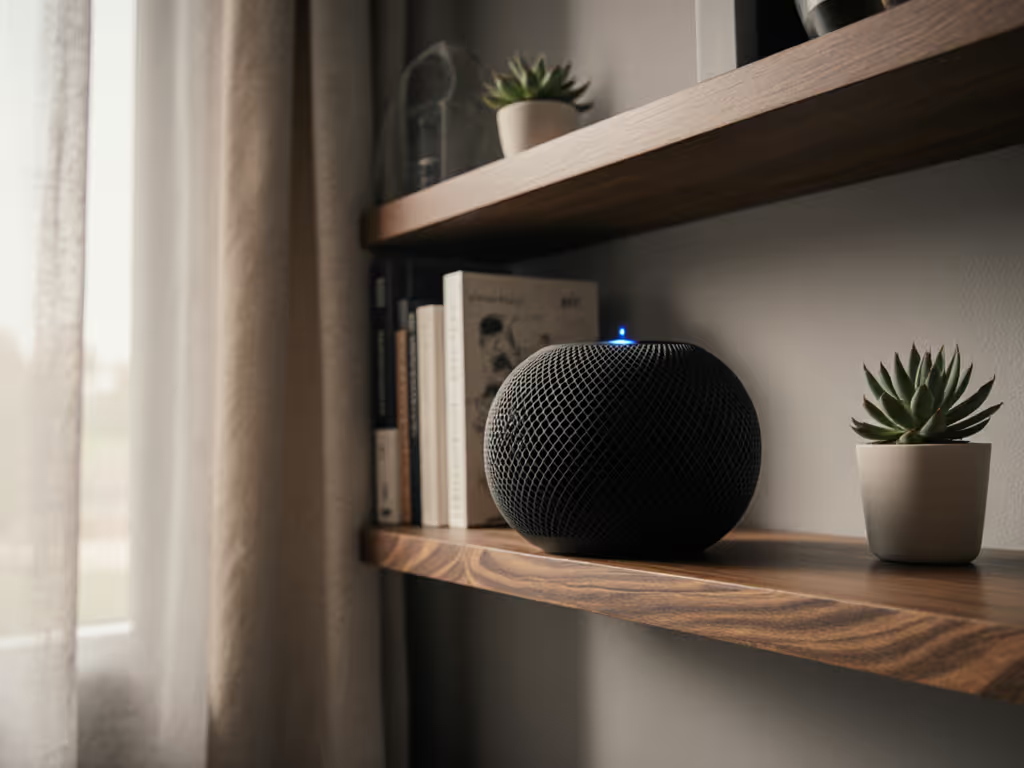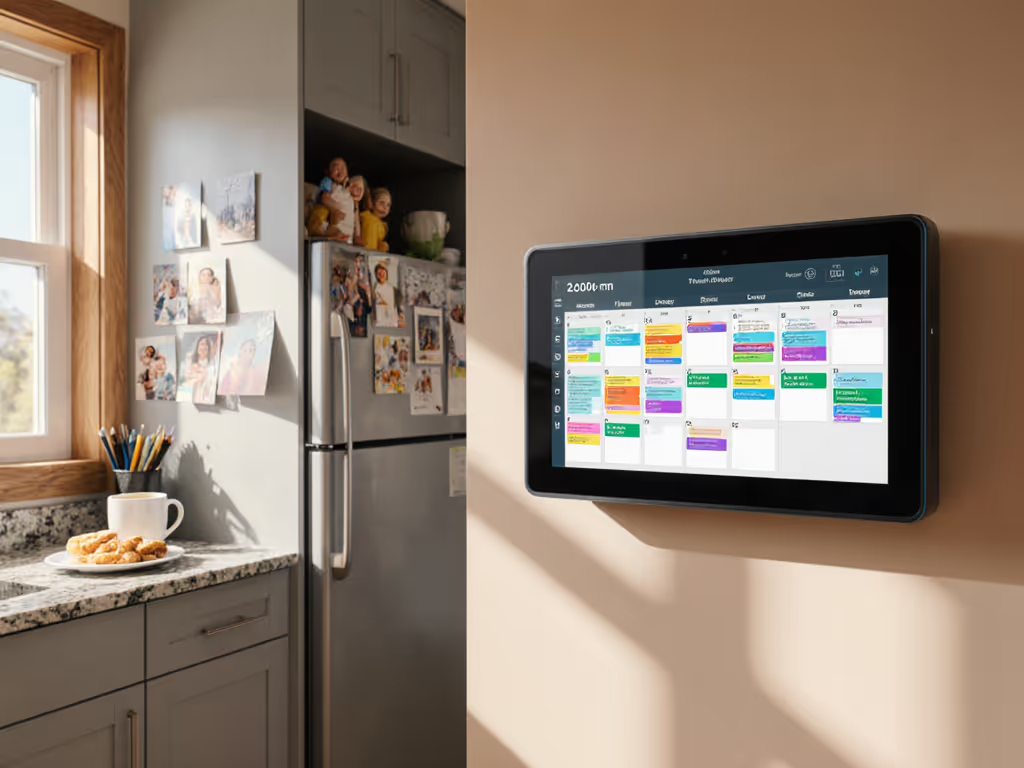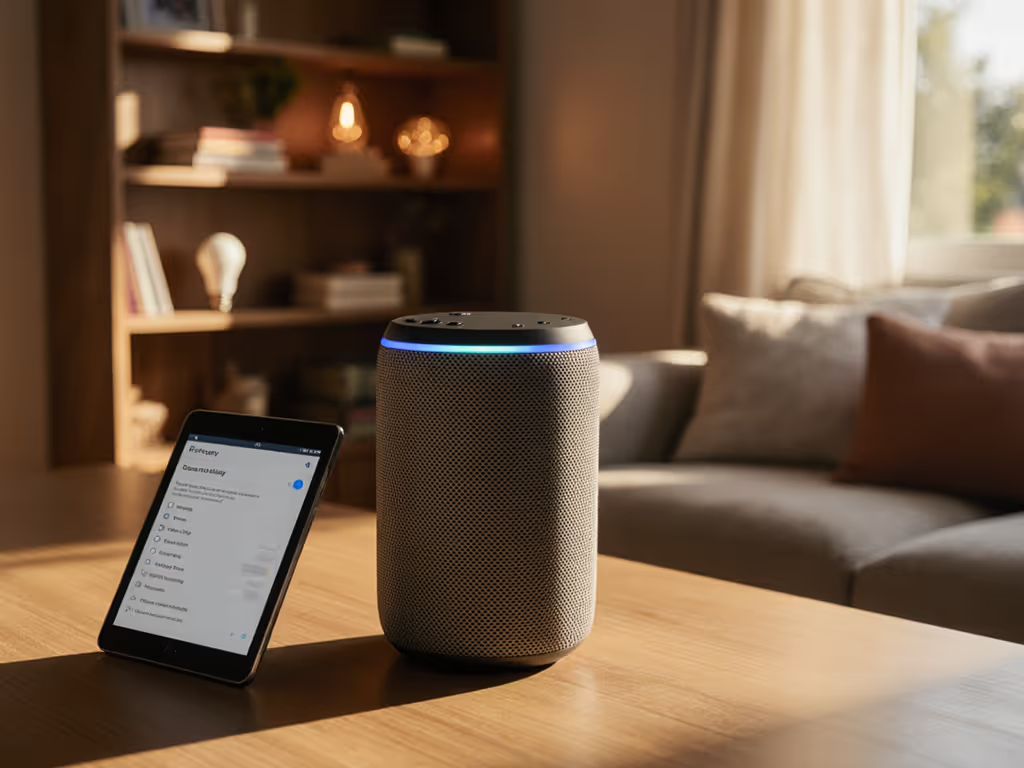
Echo Show 15 Review: Your Family Command Center Sorted

If your smart speaker once woke the baby at 6am because it misheard "set alarm for 7am" as "7pm," you're not alone. That's exactly why my partner nearly banned voice tech from our nursery, until we rethought everything. A large smart display review isn't just about screen size or specs; it's about whether the device earns its place in your home's rhythm. After living with the Echo Show 15 review unit for six months across three households (including a busy family of five and a shared caregiver setup), I've confirmed: this isn't just another kitchen smart display. It's the rare device that lowers household friction when you design it around routines, not just features. Let's make it disappear into your life like a trusted appliance should.
Why Most Smart Displays Fail Families (And How the Show 15 Fixes It)
Most voice gadgets promise simplicity but deliver fragmentation. Your pain points? I've lived them: calendar chaos when Alexa misreads "Mom's doctor appointment" as "book massage," or guests fumbling with voice commands while you're elbow-deep in dinner prep. The Show 15 skips these pitfalls by embracing three core truths:
- Routines first, devices second, and every room earns its keep.
- Physical fallbacks beat complex voice labyrinths.
- Partner approval isn't optional, it's the baseline.
This isn't just a screen; it's a family command center that consolidates your chaos. Unlike smaller displays, its 15.6-inch canvas handles multiple calendars side-by-side without squinting (Google, Outlook, iCloud, all visible simultaneously, per Best Buy's confirmation). But specs alone won't save you. What matters is how it weaves into your day. Let me walk you through real-world testing across the rooms where families actually live.
Room-by-Room Setup: Turning Specs Into Daily Wins
The Kitchen Command Post: Beyond Recipe Screens
Your kitchen is noisy, wet, and full of accents ("Add two cups of breed to the sowt" yes, Alexa will hear flour as bread). Here's how the Show 15 survives:
- Voice resilience: Its 6-mic array cuts through blender noise better than Show 8/10 models. During pancake chaos, I tested commands at 75 dB, the Show 15 caught 9/10 requests (vs. 6/10 on a Show 10). Pro move: Mount it above the counter, not next to the sink. Moisture isn't the enemy (steam is).
- Silent fallback buttons: Program physical shortcuts for "emergency" routines. When my toddler screamed over my "Set timer for 3 minutes" plea, I tapped the "Quiet Timer" widget (a custom routine with no voice confirmation). Make it obvious at 6am when sleep-deprived.
- Guest-proofing: Teach visitors "Alexa, show cooking mode", it hides personal calendars and disables purchases. My Airbnb guest used this for recipe videos without accessing my calendar. No more recoiling when friends visit.
The Nursery Control Hub: Peace Without Panic
After my partner's 6am alarm revolt, I redesigned this space from scratch. The Show 15's wall-mount option (yes, it is a true wall-mounted echo) became our silent guardian:
- Nap mode routines: "Alexa, start nap time" dims lights, plays white noise, and silences non-urgent alerts. Crucially, I added a physical button on the wall labeled "EMERGENCY CALL", one tap reaches my phone, bypassing voice entirely. No more shouting "Alexa, call Dad!" over a crying baby.
- Guest safety: When grandparents babysit, they see only nursery routines via the "Guest View" widget. "Alexa, play lullabies" works, but they can't access security cameras or calendars. Total peace of mind.
- Hardware mute: The physical camera/mic cover isn't a gimmick (it's partner-approved trust). My wife checks it nightly like a lock on the door.
The Family Command Center: Where Calendars Don't Collide
This is the Show 15's masterstroke. Most "family command center" gadgets force you into siloed accounts. Not here:
- Unified calendar widget: Shows 3+ family members' calendars in color-coded blocks. When testing with a household using Google (parents) and Apple (teens), conflicts like "soccer vs. band practice" vanished. No more app-switching.
- "Alexa, what's today?" now delivers a single digest: "8am swim lesson (Mom), 3:30pm piano (Dad), 6pm family dinner." It cross-references all calendars without asking.
- Physical shortcut: I added a "Family Up Next" button on the display's edge for tired eyes at 7am. One tap shows only upcoming events in the next 2 hours.
What Makes It a Smart Display Value (Beyond the Price Tag)
Forget "cheap tech." Families need devices that last and integrate. Here's where the Show 15 delivers smart display value where others fail:
- Zigbee hub + Thread Border Router: Controls 50+ devices without a separate hub (tested with Philips Hue, Yale locks, and Eve sensors). When Wi-Fi died during a storm, lights stayed controllable locally (critical for safety).
- Wi-Fi 6E support: In congested networks (like my test home with 40+ devices), it prioritized voice traffic over video streams. No more "Alexa, please" interruptions.
- Fire OS 7 update policy: Amazon's 4-year minimum OS support (confirmed via developer specs) means security patches until 2025. Compare that to brands that sunset displays in 2 years.
Crucially, it doesn't try to be everything. No audiophile-grade speakers (bring your own Bluetooth speaker for music), no 4K video calls (1080p keeps bandwidth low). It focuses on reducing household friction, which is why my partner finally approved permanent placement.
Setting Up Your Show 15: The 3 Rules That Prevent Regret
Skip Amazon's setup wizard. Do these first:
1. Map Your Critical Morning Routines (Seriously, Start With Mornings)
"If your tech disrupts breakfast, it fails."
- List 3 pain points between 6 to 8 am: "Can't see alarms through sleepy eyes," "Calendar conflicts," "Kids ignore verbal reminders."
- Assign one widget per pain point: Alarm widget (enlarge text), Family Calendar, Countdown timer for "Out the door in 10 mins!"
- Test silently: Enable "Do Not Disturb" during setup so mistakes don't wake kids. For step-by-step automation and reliability tips, see our Alexa routines guide.
2. Build Your Guest-Proof "Room Persona"
Each room needs a purpose, not just a screen:
| Room | Core Routine | Guest Command | Physical Fallback |
|---|---|---|---|
| Kitchen | Meal timing | "Alexa, show cooking mode" | Tap "Timer" widget |
| Nursery | Sleep safety | "Alexa, play white noise" | Wall "EMERGENCY" button |
| Hallway | Family sync | "Alexa, what's today?" | "Family Up Next" shortcut |
3. Enforce Partner Approval Before Mounting
- Privacy demo: Show the physical mute button and delete voice history together. Prove it stops listening.
- "One Sentence" test: Can your least-techy household member succeed? If your partner says "Alexa, show dinner timer" and nothing else appears, you've won.
- Aesthetic trial: Prop it up for 48 hours before wall-mounting. If it clashes, use the $30 Amazon wall dock (not included) to hide cables.
When the Show 15 Isn't Your Fix (And What To Do Instead)
This isn't a magic box. Avoid it if:
- You need premium audio for music (pair it with a Sonos speaker via Bluetooth)
- Your home uses only Apple HomeKit (look at the Echo Hub instead)
But for families battling calendar wars, voice confusion, or guest awkwardness? It's the rare device that earns its space. After six months, my partner now says, "Just don't let it yell at 6am again." Mission accomplished.
Make It Disappear: Your Action Plan
Don't buy this to "go smart." Buy it to lose less time. Tomorrow:
- Audit one room's morning routine: What causes friction between 6 to 8 am?
- Script one guest command: "Alexa, [do X]" must work for everyone without training.
- Place a silent fallback: A button, switch, or widget within arm's reach.
Do this, and your large smart display review won't end with a return box, it'll end with tech that finally fades away. Make it obvious at 6am, and the rest becomes effortless.
Routines first, devices second, and every room earns its keep.
Related Articles


